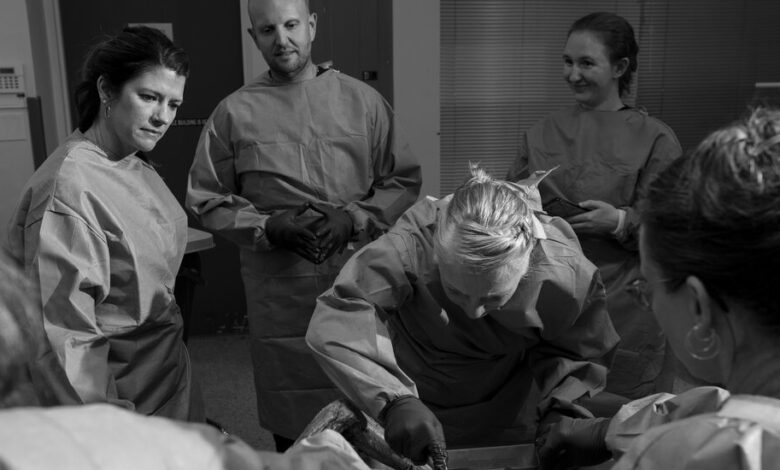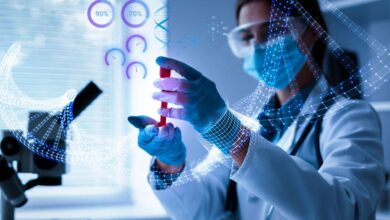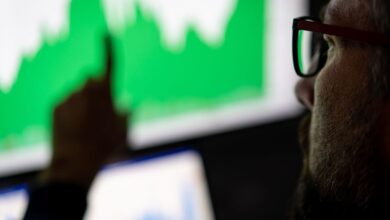Why Yoga Teachers Are Learning to Dissect Cadavers

Jane Sato thought she understood the abdominal muscles. For the first decade that she taught Pilates and yoga in New York City, she would tell her students to pull their belly button into their spine to strengthen their core.
But when she saw what actual abdominal muscles looked like during a human cadaver dissection workshop at Mount Sinai Hospital — the crisscrossed layers of tissue, the way the muscles also ran back to front and up and down — she realized her words weren’t nearly as instructive as they could be.
“There’s just a lot more to the picture,” she said. “When you see it in real life, your cues automatically change.”
Now, instead of telling clients to suck in their belly button, she tells them to draw in all their core muscles, “like a hug.”
Ms. Sato is one of thousands of fitness professionals who have sought out cadaver workshops to better understand anatomy and improve their teaching skills. Over the past two decades, at least a dozen dissection courses — most outside the traditional medical system — have popped up, catering to people like yoga teachers, massage therapists and Peloton trainers.
While most of these professions require some anatomy training to become certified, it can vary widely and usually relies on two-dimensional pictures, plastic models and even anatomy coloring books, which can create a misleading picture of how the body works.
“They are looking for more information,” said Rachele Pojednic, the director of exercise science at Norwich University and a research associate at Harvard’s Institute of Lifestyle Medicine. But often, she added, “they don’t know who to go to.” Why not “arm these professionals with as much knowledge as possible?”
A visceral experience
Experts say you can’t fully understand the value of a dissection until you participate in one. So on a sunny Saturday in October, fueled partly by morbid curiosity, I went to a lab called Experience Anatomy, in an office park near the Charlotte, N.C., airport. I was both excited and nervous, and keenly aware that I might not be able to unsee what I observed.
The two-day dissection was led by Fauna Moore, an Ashtanga yoga instructor and massage therapist who began attending, studying and then teaching dissections after being disappointed with the anatomy instruction she received during training. (One does not need a special certification to oversee a cadaver dissection, though she has spent years shadowing experienced dissectors.)
After a short orientation, the course’s five students gathered around the cadaver, scalpels in hand. While some courses for fitness professionals teach with bodies (or body parts) that have already been dissected, in this workshop the students would be dissecting a full cadaver themselves. In all cases, the donors or next of kin have specifically donated the body to scientific learning — though they don’t always know whether it will be used to teach medical students, physical therapists or yoga instructors.
As the group stood in silence under the glare of fluorescent lights, Ms. Moore removed a white sheet covering the body. Dissecting a human being can be an emotional and jarring experience, she said, so she suggested that the students give the cadaver, a 75-year-old female, a name, in recognition of her humanity.
The group decided on “Betty.”
New technologies, such as three-dimensional virtual software, have made the human body easier to study — and, some argue, rendered cadavers unnecessary. But medical students still say that seeing, touching and holding real human tissue is far more instructive than pictures or models. And it leads to better, more compassionate care, said Jeffrey Laitman, who has helmed Mount Sinai’s anatomy lab for more than 40 years.
“It’s an enormously humbling experience,” he said. “When you hold a heart in your hand, you are never the same again.”
In the dissection room, Ms. Moore demonstrated how to properly hold a scalpel (“like a pen”). Then she made the first cut, on the upper thigh, showing how to delicately pull back one layer at a time — first the skin, then the sticky white fascia, then the bright yellow fat and so on. The body had been “soft embalmed,” a technique that relies on very little formaldehyde, preserves colors and textures and, I quickly learned, makes things very messy.
“I don’t know where to start,” one student, a massage therapist, said.
“You can’t mess it up,” Ms. Moore replied. “Even if you go a little bit too deep, you can start over somewhere else.”
A new perspective on the body
For people who lay hands on clients — like massage therapists and Pilates, yoga or strength trainers — touching actual tissue offers unparalleled learning, said Dr. Carrie McCulloch, a physician and Pilates instructor who co-founded the Mount Sinai dissection course in 2006 with her husband, a Pilates instructor and former dancer named Matt McCulloch, as well as Dr. Laitman.
“They are working with real human bodies,” Dr. McCulloch said, “and they should learn from real human bodies, too.”
Courses range from about $1200 for a weekend workshop to $4500 or more for a six-day program. Anna Kaiser, who owns two popular cardio dance studios in New York and attended the Mount Sinai course in 2012, said the class made her feel better equipped to help certain postpartum clients.
Ms. Kaiser was able to study a donor body that had undergone a C-section and was struck by just how many layers of abdominal muscle were severed. This deepened her appreciation for the seriousness of the recovery, as well as for the work needed to rebuild core strength, layer by layer.
Now, “I can visualize what that looks like,” she said. “It’s very different than seeing a picture in a book.”
Back at the dissection table, the students had begun to reach muscle. “It’s so much more delicate than I imagined,” one commented, pulling apart the four long strands that made up the quadriceps.
In contrast, they noted the toughness of the fascia, or connective tissue, that surrounds every muscle. “It’s very flexible but very durable,” one student said. “You have to put a little pressure on your scalpel.”
One student handed me the iliotibial (or IT) band, which ran from Betty’s hip to her knee and felt strong but surprisingly light and thin, almost like duct tape. For all the years I aggressively foam rolled mine, I pictured it as thicker and knottier. I made a mental note to go easier.
The case for cadavers
Over the past twenty years, as research around the health benefits of exercise has expanded, more and more primary care doctors are recommending exercise to their patients, according to the National Center for Health Statistics. As a result, many fitness professionals now find themselves working with clients who have complex conditions, from knee replacements to high blood pressure.
“Health, fitness, treatment, doctors are part of a continuum,” Dr. Laitman said. “Fitness professionals — they see people ofttimes before they’ll go to a doctor.”
Sometimes, after taking a dissection course, “instructors realize that some of the choices they were making for their clients were not well enough informed,” said Mr. McCulloch, who has co-written books about anatomy. For example, some students, after seeing the bones of cadavers with osteoporosis, realized that the bends and twists in their workouts may be too aggressive for a client’s fragile body.
Natasha Standley, a massage therapist and former step aerobics instructor in Ms. Moore’s course, told me later that she learned what is — and isn’t — in her hands when she works with clients.
“Some of the muscles are really, really deep,” she said. The dissection made it clear that the psoas and quadratus lumborum (QL) muscles, which can cause back, pelvis and hip pain, aren’t accessible, despite what diagrams might suggest. Instead of trying to reach them through massage, she said, she plans to incorporate more stretching into her work.
After the students finished lunch (most opted for vegetarian), they returned to their posts at the dissection table. Ms. Moore and a lab assistant had flipped Betty over and put on music to reinvigorate the group. As R.E.M.’s “Losing My Religion” began playing through an overhead speaker, everyone picked up their scalpels.
The day went smoothly, but afterward I felt shaken. When I arrived at the airport that night, I didn’t see travelers — I saw walking cadavers.
But as time has passed, I have come to appreciate the intricacy and interconnectedness of every muscle, tendon and bone. Spending time with a body that will never move again gave me a new appreciation for my own body’s ability to move. When I got home, I couldn’t wait to go for a run.
Source link



